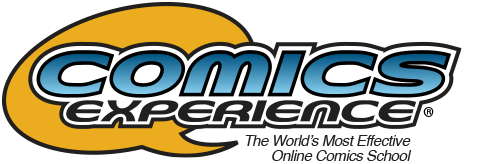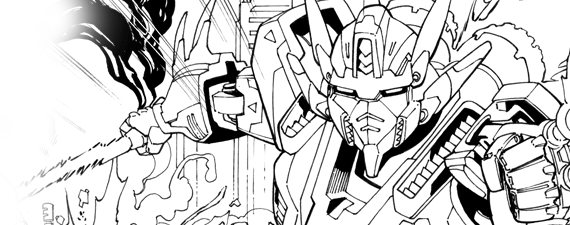With 2018 now here, it’s time you started taking action to achieve your comics creation goals! Comics Experience offers a slate of introductory courses that get you acquainted with the basics of the medium.
This week, we’re speaking to Phillip Sevy, who teaches Introduction to Comic Book Art. Class begins January 31, and we’ve got a few slots still open. Sign up now to ensure you secure your space!
Please explain your teaching philosophy for the Introduction to Comic Book Art Class.
Whether you are brand new or you’ve been working at drawing comics for a long time, the most valuable skill you can develop is an analytical ability to examine your work, understand its strengths and weaknesses, and what you can do to improve areas that need improvement. In the Introduction to Art class, we’ll be going over the foundational blocks to visual storytelling – the key principles that separate the hobbyist and the professional.
What are some overlooked nuances of comic book art that your class will cover?
Making comic books can be tainted by our love from reading them. Comics are a visual medium and are, initially, surface level. We look at it and we like it. But the surface polish on top belies the layers and layers of scaffolding and structure that makes the comic look so easy. We’re going to begin to peel back those layers and understand how to build a comic page.
What does your art process look like? What lessons and takeaways from your process would you like to heavily emphasize to students?
My process is always slowly evolving as I’m constantly seeking ways to get better and more efficient. Generally, after working with my editor, writer, and reading through the script multiples times I’ll draw up rough thumbnails (sometimes many, many variations in order to find the right take), take those and refine them digitally and produce fairly right layouts. I’ll enlarge my layouts and pencil and ink from them. Depending on the scene, I’ll do a variety of research and design (some traditional, some 3D) to aid in my understanding of space, backgrounds, and the like. The most important part of my process is in the finding of the best way to tell a story.
I spend a lot of time and brain power on my thumbnails and layouts – but that is the core to comics. That is the storytelling. Pencilling and inking are just draftsmanship to help realize the story. Introduction to Art will be focus on the storytelling, not the techniques.
We’ve got three introductory courses beginning next week – including Introduction to Comic Book Art! You can learn more and sign up here.
——————————————-
If you want to make comics, write, draw, letter, and color comics, or improve as a comics creator, you’ll find like-minded friends and colleagues in our online workshops and courses. We hope to see you there!
Posted by Meredith Nudo


